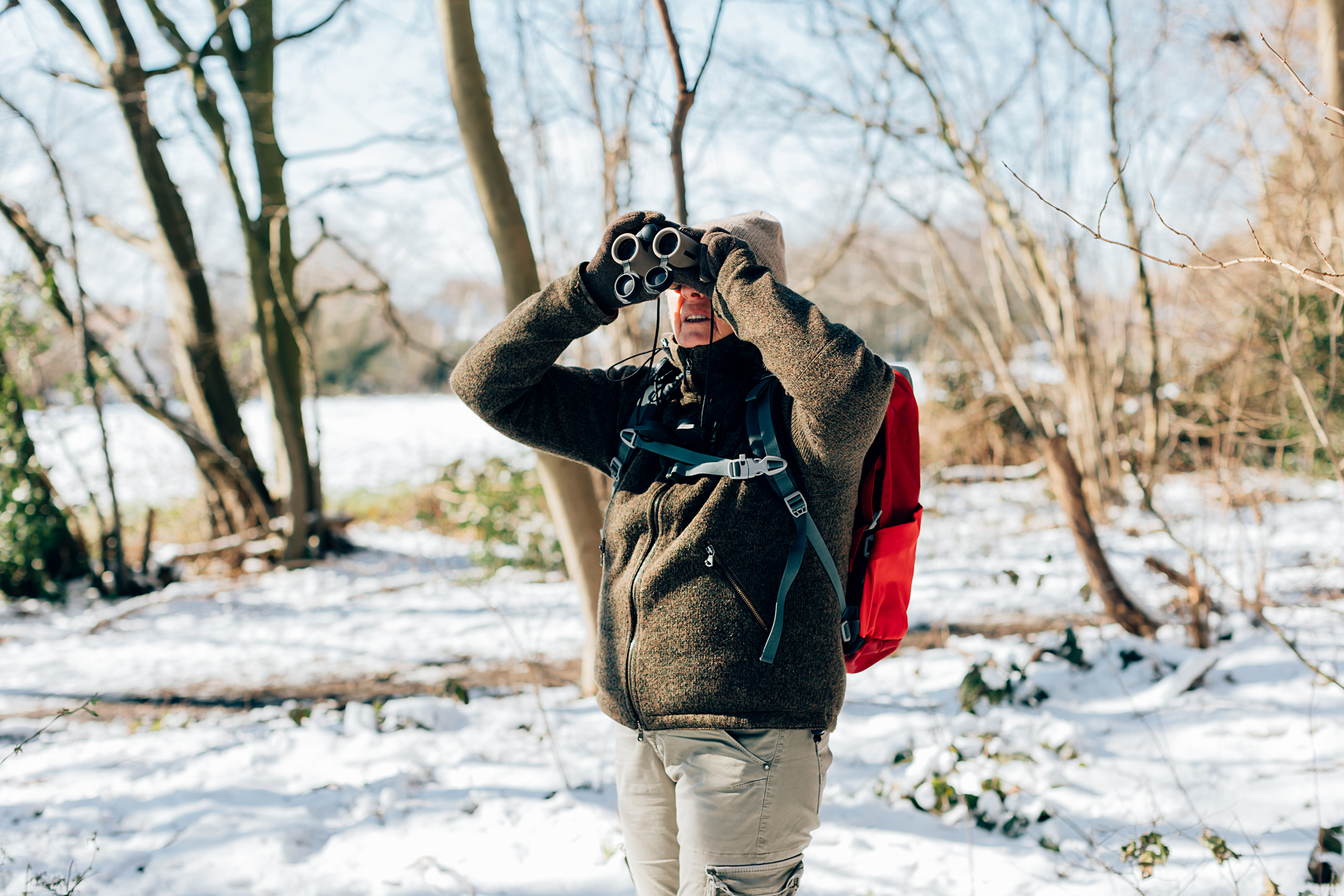Getting outside and staying active is vital to our health and well-being, even when the weather isn’t the warmest. We have assembled some tips to help you get all the benefits of outdoor exercise and fresh air in the colder months—safely.
The physical and mental benefits of getting outside outweigh the risks of cold weather, especially with the safety precautions shared here.
“Staying active builds strength, stamina and flexibility, all of which reduce the risk of falls and boost the immune system,” McLean Boundless Wellness Director Kimberly Wright explains. “Being outdoors has the added benefit of lifting your mood and giving your body Vitamin D from sunlight. Vitamin D can help reduce joint pain, inflammation and diabetes symptoms.” Outdoor activity also poses a lower risk of spreading the COVID-19 virus than indoor group exercise does.
It may seem easier to stay inside, whether it’s because you have an active routine established on a treadmill or have limitations of a walker. But getting out and about is particularly important to seniors. No matter what your situation, ask a companion to head outside with you—the combination of social interaction, physical activity, fresh air and sunshine can reduce stress, sharpen your memory and significantly improve mental well-being. Plus, having someone with you in case of an emergency makes it safer for you to get the exercise you need.
Best activities
Taking a walk on a smooth, level path or sidewalk is an excellent way for seniors to get exercise. Go only as fast or as far as you comfortably can. Simply standing and moving instead of sitting is good for your heart, lungs and bones. And the more often you walk, the more you will build your stamina.
Depending on your fitness level and your healthcare provider’s advice, hiking, snowshoeing and cross-country skiing are also great winter activities for seniors. Stick to well-maintained trails, stay on the trail and always carry a cell phone and whistle. Pace yourself, and build up slowly to harder trails.
Dress for the weather
Seniors are more at risk for hypothermia and falls, so warm clothing and good shoes are essential. Here are tips on what to wear and what you may need for outdoor exercise:
- Wear loose layers of clothing. The air between the layers will help keep you warm.
- Wear a hat and scarf. A lot of body heat is lost when your neck and head are uncovered. Pulling a scarf over your mouth and nose will protect your lungs from cold air.
- Wear warm socks, and choose mittens over gloves for better protection against frostbite.
- Avoid cotton socks and clothing and choose moisture-wicking fabrics and fleece. When cotton gets wet with sweat or snow, the moisture is trapped and will make you feel colder.
- For walking, wear shoes or boots with extra stability, good traction and nonskid soles to prevent slipping. For hiking, wear waterproof boots with ankle support and thick, nonskid soles.
- Bring a walking stick or pole. If you use a cane, replace the rubber tip before it is worn smooth.
- If it’s very cold, stay outside for only a short time or wait for another day.
Plan ahead
Check out the area, the weather and more so you don’t face any surprises at your destination. Here are more weather-specific tips:
- If you’re hiking or doing something more adventurous, visit the park website or call in advance to make sure trails are open and safe.
- Check the weather forecast and adjust your schedule to avoid wind and precipitation. A heavy wind or damp clothing can quickly lower your body temperature and increase your risk of hypothermia.
- Always bring a water bottle.
- If you’re going farther than a walk around your neighborhood, pack a “go bag” with important medications, hearing aids or any other personal supplies you might need if your outing takes longer than expected.
Exercise safely
Keep these tips in mind any time you exercise, but particularly when you’re outdoors:
- Always warm up before exercising and cool down afterward.
- Listen to your body. Stop if new pain develops or you are too out of breath to talk.
- Drink water before, during and after exercising, even if you’re not feeling thirsty.
- Step carefully on wet pavements or avoid them altogether, as they could be iced over.
- Be very cautious if you choose to shovel snow. When it’s cold outside, your heart works extra to keep you warm. Shoveling snow may put too much strain on it. Ask your healthcare provider whether snow shoveling is safe for you.
Find an inspiring place
Options for inspiring outdoor settings and trails are plentiful in Simsbury and the surrounding Connecticut area.
One great place is the McLean Game Refuge, a private forest preserve established in 1932 by George P. McLean, a former governor and U.S. senator for Connecticut. This wildlife sanctuary has grown to include more than 4,400 acres in Simsbury, Granby and Canton that are preserved for the protection of animals and forests as well as the enjoyment of outdoor enthusiasts and nature lovers. McLean maintains more than 20 miles of trails in the Game Refuge that are perfect for hiking, snowshoeing and cross-country skiing.
The Game Refuge includes some of the oldest forest areas in the state, meadows, ponds, a rich variety of animal species and the log cabin where Senator McLean entertained guests such as President Taft and President and Mrs. Coolidge. The refuge is open to the public daily from 8 a.m. to dusk.
As another option, the McLean campus has walking trails for residents and offers group walks when it is safe to do so.
Other nearby places to explore include the following:
- The Metacomet Trail, a ridge line hiking trail with spectacular views
- State and municipal parks in Simsbury
- The Farmington River Trail, a 22-mile, handicapped-accessible greenway for walking, hiking and cross-country skiing, providing direct access to many Farmington Valley town centers and hundreds of acres of open space
No matter which place you choose, the important thing is to get active—and get outside!


